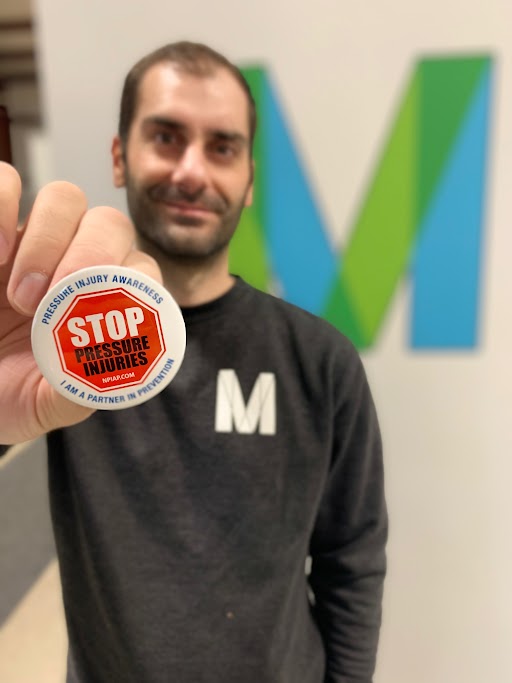This post was guest authored by Heather Trumm BSN, RN, CWON Director, VGM Wound Care

When thinking of what aspects of pressure injuries to write about, 2 topics always come to mind: nutrition and blood flow. Of course, these two aspects apply to all wounds, not just pressure injuries, but they are so important and many times overlooked.
Continue reading and contact Mission Health + Home today for more great information!
Nutrition
Macro and Micronutrients are required by our body to maintain, grow and repair tissue. Nutrition plays a huge part in the prevention and treatment of pressure injuries. Many times we think if a patient is eating, their nutritional status should be sufficient. Asking the patient what they eat and drink and how much is key in their assessment, however, there are some common screening instruments that have been identified for validating nutritional risk as well. They are the Mini Nutritional Assessment (MNA), Malnutrition Universal Screening Tool, Nutrition Risk Screening 2002, and the Short Nutritional Assessment Questionnaire.
“As a wound ostomy nurse, I have to say I didn’t realize the impact nutrition plays on wound healing. I would like to highlight some micro and macronutrients and their roles in the healing process.
Vitamins
Water soluble vitamins such as B, B3 and C are recommended and essential through the entire wound healing process.
Fat soluble vitamins such as A, E, K are used in skin and bone metabolism, therefore important in wound healing. Vitamin D3 has multiple functions in the body but is critical for genome control of cell proliferation in wound healing. It’s important to get Vitamin D3 levels checked to make sure levels are sufficient.
Caloric Intake
According to the European Pressure Ulcer Advisory Panel (EPUAP), National Pressure Injury Advisory Panel (NPIAP) and Pan Pacific Pressure Injury Alliance (PPPIA), 30-35 kcal/kg of body weight per day is needed for adults with a pressure injury or those at risk. If the patient isn’t consuming enough calories, they could be losing muscle and weight and their wound healing will stall.
Amino Acids
Recently I was discussing the topic of nutrition with a registered dietitian who specializes in wound care. I originally thought that protein and amino acids were the same things; I was wrong! Amino acids are the building blocks of protein.
There are various types of amino acids that aid in wound healing, but arginine and glutamine are needed in greater amounts. Like increased calorie intake during wound healing, an increase in protein is also needed. The EPUAP/NPIAP/PPPIA recommends the following amount of protein for a patient with a pressure injury or at risk of malnutrition: 1.25-15.g/kg of body weight per day.
Hydration
Last but not least is hydration! An adult’s body is 60% water to function properly and when a pressure injury is involved, it’s recommended that 1mL fluid/kcal is consumed, so drink that water!
Practice Injury Prevention
I hope you all picked up a couple of pearls from this post. We all play a role when it comes to pressure injury prevention! Keep up the great work, and for more information on living your life to the healthiest, contact Mission Health + Home today!

